Winter Eelgrass Monitoring
With the return of the winter king tides, the Morro Bay estuary experiences some of the highest high tides and lowest low tides of the year. These extreme low tides leave our eelgrass beds exposed, making it the perfect time for monitoring. In partnership with Cal Poly, we are conducting drone flights to create a detailed bay-wide eelgrass map. Our staff are also heading out for ground surveys to measure changes in eelgrass density and algae abundance. When combined, the two monitoring efforts provide a snapshot of eelgrass health and acreage.
The Benefits of Ground Surveys
Each type of monitoring has its benefits and limitations. Drone surveys are an incredibly efficient way to measure eelgrass acreage throughout the bay, allowing us to track the eelgrass decline and recent recovery. On the other hand, ground surveys focus on specific eelgrass beds to track smaller scale changes to better understand the drivers behind bay-wide acreage changes. Even though eelgrass acreage has increased in the estuary as a whole, each eelgrass bed has behaved differently during the recovery period. To highlight some of these differences, we’re going to take a look at two eelgrass beds that are exhibiting very distinct trends.
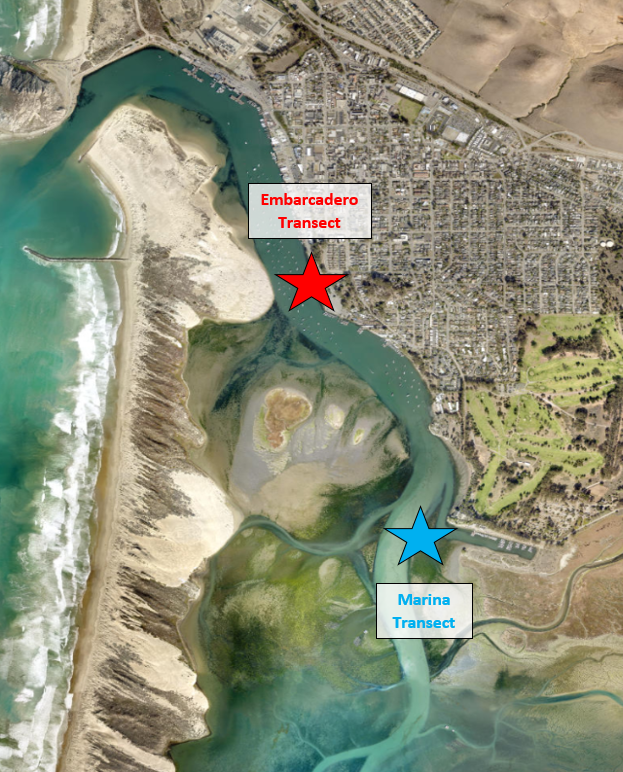
Why Measure Eelgrass Density?
Eelgrass density is the number of eelgrass plants within a defined area. High eelgrass density is typically an indication of a healthier, more robust bed, while low density tends to represent a bed in a weakened state. Historically, the Embarcadero bed had a high density of eelgrass shoots, while the Marina bed had no eelgrass present. Since 2017, eelgrass density has steadily risen at the Marina bed, consistent with the overall increase in acreage observed throughout the estuary.
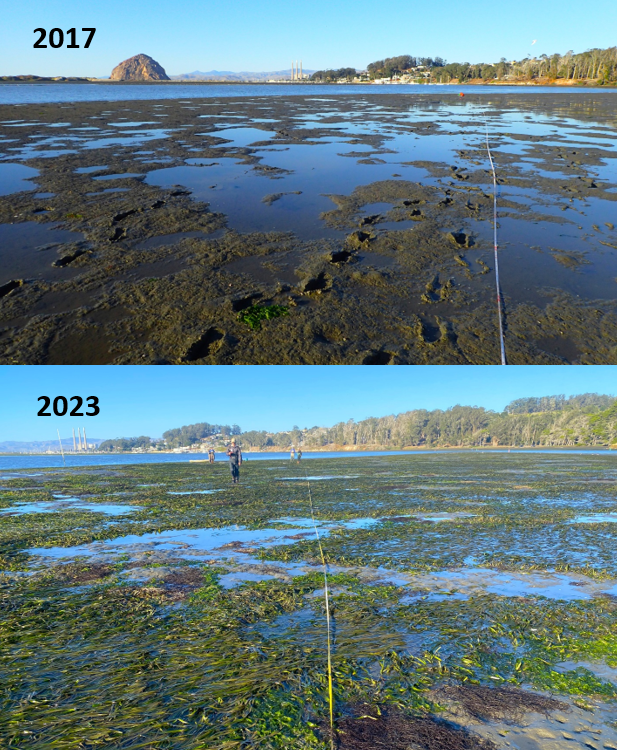
But the situation is different at the Embarcadero site. Since 2020, this bed has experienced a declining trend in shoot density.
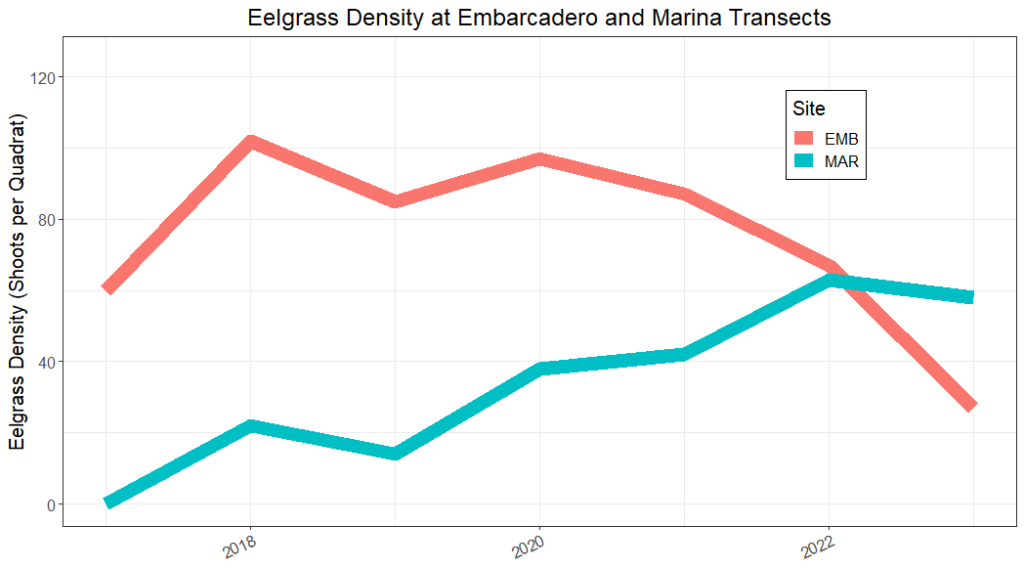
Declining or On the Move?
There are many factors that can influence eelgrass density, including elevation change, competition with algae, and the makeup of microbial communities that live on eelgrass blades. Since eelgrass prefers to grow within a certain range of water depths, changes to elevation can alter the area available for eelgrass growth. Excess sediment deposition can smother eelgrass beds and raise the elevation above the ideal depth range, while high levels of erosion can uproot and wash away patches of eelgrass.
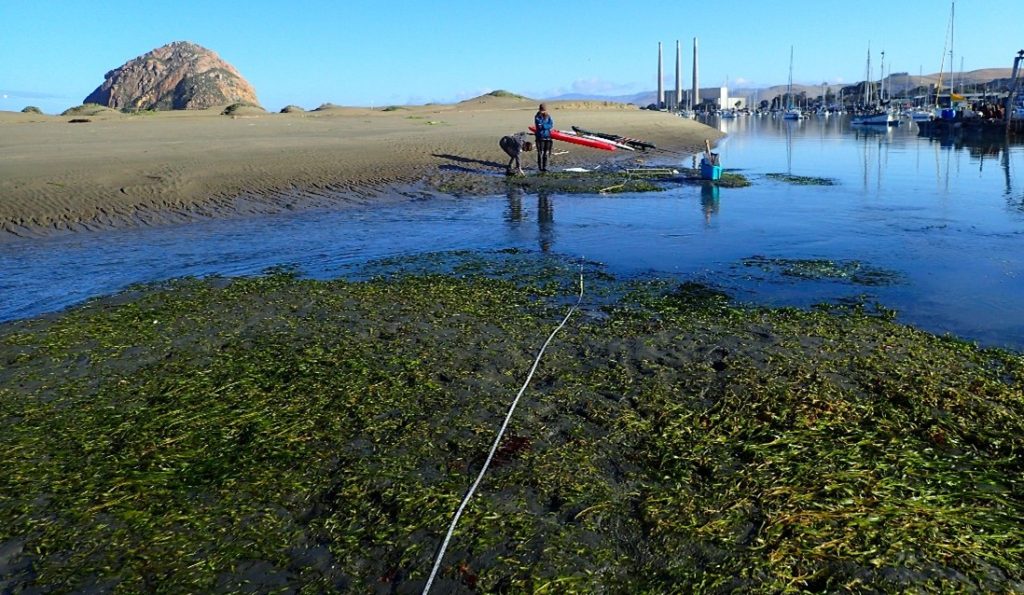
While the Morro Bay estuary has experienced phases of large-scale erosion and sediment deposition in the past, many sites exhibited localized elevation changes that don’t fit the overall trends observed in the bay. Our ground surveys are conducted at the exact same locations each year. If the elevation changes at a site, eelgrass may shift toward nearby areas with more suitable depths. So, while eelgrass may no longer be present at our monitoring location, it may have merely shifted its location and the change does not necessarily indicate overall eelgrass loss.
Algae Abundance on the Rise
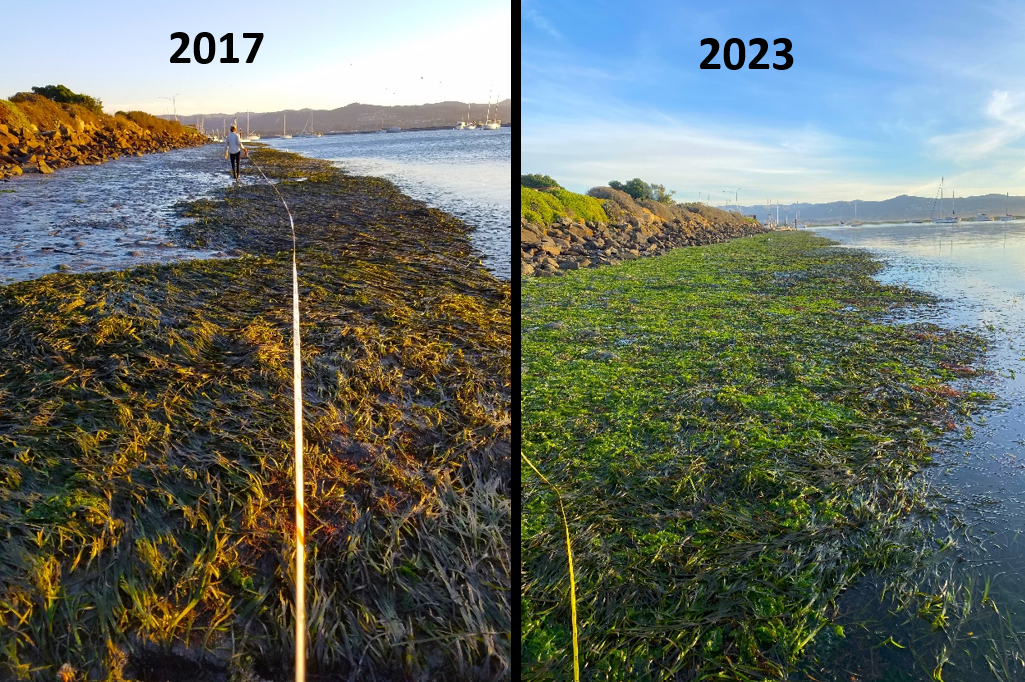
The accumulation of algae can be another stressor for eelgrass beds. Thick mats of algae can build up on top of eelgrass beds and shade them from the sunlight they need for photosynthesis. The green algae Ulva has increased in abundance since 2020 at multiple monitoring sites, with our fall 2023 data indicating some of the highest measured amounts at the Embarcadero site. These Ulva mats could be contributing to the decline observed at Embarcadero, although further research is needed. The recent rise in algae has spurred the development of a project dedicated to tracking algae abundance, which was covered in a previous blog post.
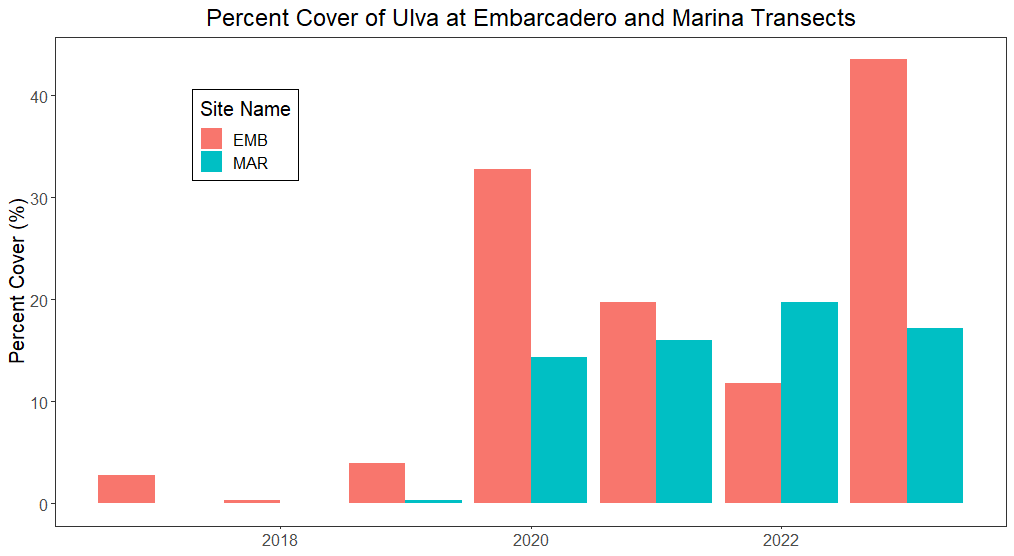
Microbes Make a Difference
Zooming in to the microscopic level, studies have shown that the bacterial communities living within eelgrass beds can either positively or negatively influence their overall health depending on the types of microbes present (Beatty et al. 2022). To study the eelgrass microbe community in Morro Bay, our partners at Cuesta College have been collecting eelgrass tissue samples since 2019 for molecular analysis, with results expected later this year.

It is important to understand the influence of small-scale changes to eelgrass beds, as the factors contributing to the change may not stay small for long. Even with the rapid expansion of eelgrass, the Estuary Program is committed to continuing our monitoring efforts so we can make informed management and restoration decisions.
Help us protect and restore the Morro Bay estuary!
- Donate to the Estuary Program today and support our work in the field, the lab, and beyond.
The Estuary Program is a 501(c)3 nonprofit. We depend on funding from grants and generous donors to continue our work. - Support us by purchasing estuary-themed gear from ESTERO. This locally owned and operated company donates 20% of proceeds from its Estuary clothing line and 100% of Estuary decal proceeds to the Estuary Program. Thank you, ESTERO!
- Purchase items from the Estuary Program’s store on Zazzle. Zazzle prints and ships your items, and the Estuary Program receives 10% of the proceeds.
- Subscribe to our seasonal newsletter: Between the Tides!
- We want to hear from you! Please take a few minutes to fill out this short survey about what type of events you’d like to see from the Estuary Program. We appreciate your input!